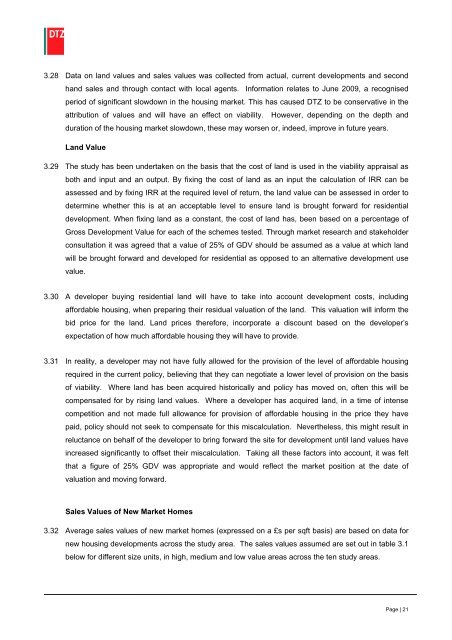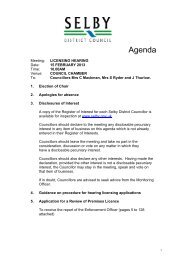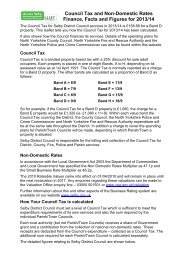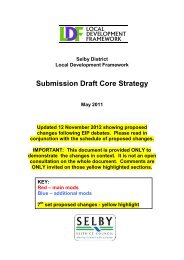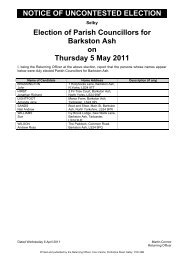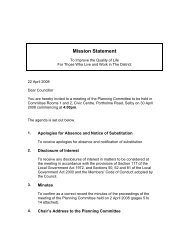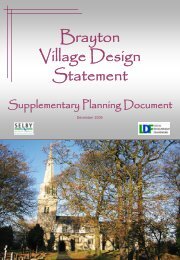Final Economic Viability Report September 2009 - pdf
Final Economic Viability Report September 2009 - pdf
Final Economic Viability Report September 2009 - pdf
You also want an ePaper? Increase the reach of your titles
YUMPU automatically turns print PDFs into web optimized ePapers that Google loves.
3.28 Data on land values and sales values was collected from actual, current developments and second<br />
hand sales and through contact with local agents. Information relates to June <strong>2009</strong>, a recognised<br />
period of significant slowdown in the housing market. This has caused DTZ to be conservative in the<br />
attribution of values and will have an effect on viability. However, depending on the depth and<br />
duration of the housing market slowdown, these may worsen or, indeed, improve in future years.<br />
Land Value<br />
3.29 The study has been undertaken on the basis that the cost of land is used in the viability appraisal as<br />
both and input and an output. By fixing the cost of land as an input the calculation of IRR can be<br />
assessed and by fixing IRR at the required level of return, the land value can be assessed in order to<br />
determine whether this is at an acceptable level to ensure land is brought forward for residential<br />
development. When fixing land as a constant, the cost of land has, been based on a percentage of<br />
Gross Development Value for each of the schemes tested. Through market research and stakeholder<br />
consultation it was agreed that a value of 25% of GDV should be assumed as a value at which land<br />
will be brought forward and developed for residential as opposed to an alternative development use<br />
value.<br />
3.30 A developer buying residential land will have to take into account development costs, including<br />
affordable housing, when preparing their residual valuation of the land. This valuation will inform the<br />
bid price for the land. Land prices therefore, incorporate a discount based on the developer’s<br />
expectation of how much affordable housing they will have to provide.<br />
3.31 In reality, a developer may not have fully allowed for the provision of the level of affordable housing<br />
required in the current policy, believing that they can negotiate a lower level of provision on the basis<br />
of viability. Where land has been acquired historically and policy has moved on, often this will be<br />
compensated for by rising land values. Where a developer has acquired land, in a time of intense<br />
competition and not made full allowance for provision of affordable housing in the price they have<br />
paid, policy should not seek to compensate for this miscalculation. Nevertheless, this might result in<br />
reluctance on behalf of the developer to bring forward the site for development until land values have<br />
increased significantly to offset their miscalculation. Taking all these factors into account, it was felt<br />
that a figure of 25% GDV was appropriate and would reflect the market position at the date of<br />
valuation and moving forward.<br />
Sales Values of New Market Homes<br />
3.32 Average sales values of new market homes (expressed on a £s per sqft basis) are based on data for<br />
new housing developments across the study area. The sales values assumed are set out in table 3.1<br />
below for different size units, in high, medium and low value areas across the ten study areas.<br />
Page | 21


